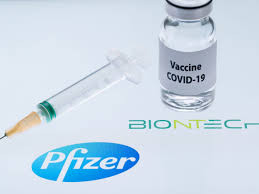At what point do you say to yourself these f were willing to vaccinate children with mind control nanoparticles regardless of the oxidative stress side effects?
I would probably say that to myself when the probability of it being true reached near 100%. I haven't looked at enough evidence of the nanoparticles to know either way. I haven't seen "nanoparticle" in the ingredients, so I need to learn more about it, but the mRNA is also concerning.
Given everything you now know about vaxxines go back & watch the Documentaries Vaxxed 1&2. Autism is a fate worse than death
Pfizer 'N' Tech. Clue is in the name N = Nano
Given everything you now know about vaxxines go back & watch the Documentaries Vaxxed 1&2. Autism is a fate worse than death
How do you make penicillin?
Sonocrystallization.
Who owns the patent?
Pfizer.
How do viruses form?
Ultrasound.
1.2.1.3.2 Laser-induced Nucleation Application of continuous wave42,43 or pulsed lasers44,45 can dramatically shorten induction times in a wide range of solutions. In principle, this provides an intriguing opportunity for accurate spatial and temporal control of nucleation in both batch and continuous systems. Furthermore, laser-induced nucleation can lead to different polymorphs being nucleated compared to identical solutions in the absence of lasers.46
As laser-induced nucleation has been reported for systems which were not significantly absorbing light at the laser wavelengths used, this phenomenon does not necessarily involve photochemical effects.
For pulsed lasers, it has been established that a certain threshold laser power is needed to induce nucleation47,48 and that the probability of nucleation can further increase with increasing laser power. It has been also observed that the probability distribution of induction time in laser irradiated glycine solutions shows bi-exponential distribution, where a certain fraction of samples undergo fast laser-induced nucleation while the rest undergo much slower spontaneous nucleation.
However, the mechanism of laser-induced nucleation in the absence of a photochemical effect is not yet clear. Several mechanisms have been suggested, such as polarization of clusters and cavitation or bubble formation, e.g., caused by heating of nanoparticulate impurities.42–47
1.2.1.3.3 Effects of Electric or Magnetic Fields on Nucleation A theoretical description of the effect of an electric field on the homogeneous nucleation rate preceded experimental work and concluded that depending on the ratio of dielectric constants between solution and solid the nucleation rate will decrease or increase.49 One of the first experimental reports on the combination of electric field and crystallization showed that the electric field enabled the crystallization of an enzyme.50 Later on, it was shown that crystals of lysozyme formed with a preferred orientation on the electrode, probably because of the field's influence on the nucleation process.51
A decrease in induction time of the protein BPTI was for instance observed in the presence of an electric field assumed to occur due to electromigration.52 Another interesting effect is that particle motion is induced in a suspension in an isolator solvent after which the particles collect at a specific electrode.53 This effect was used to separate a mixture of crystals that collect at different electrodes under the influence of an electric field.
Electric fields are nowadays known to be able to locally enhance or inhibit nucleation, although the mechanism seems not yet clear. Despite its potential, as far as we know, localized electric field induced nucleation has not yet been applied to continuous crystallization processes.
1.2.2 Secondary Nucleation
Secondary nucleation is believed to be the predominant source of nuclei in the vast majority of crystallization processes. Secondary nucleation also could cause polymorphism “whether contact secondary nuclei originate from parent crystals via microattrition or from semiordered solute clusters at the interface of parent crystals” (Figures 1.3, 1.4and 1.5),54,55 however, detailed discussion of this topic is not in the scope of this chapter. The importance of secondary nucleation can be explained with two examples of seeding and particle attrition:
1.2.2.1 Seeded Crystallization In order to keep the crystal number constant, primary or secondary nucleation needs to be prevented, therefore a zero (or negligible) rate of secondary nucleation is required. Typically, this is difficult to achieve in suspension crystallizers because of the preponderance of secondary nucleation. In continuous stirred tank (CST) crystallization, the secondary nucleation is typically required for steady supply of new crystals, so the rate of secondary nucleation needs to be controlled. This should be the main focus of the process design such that the population density can be maintained at a modest supersaturation consistent with faceted growth, impurity rejection and delaying the onset of encrustation.

